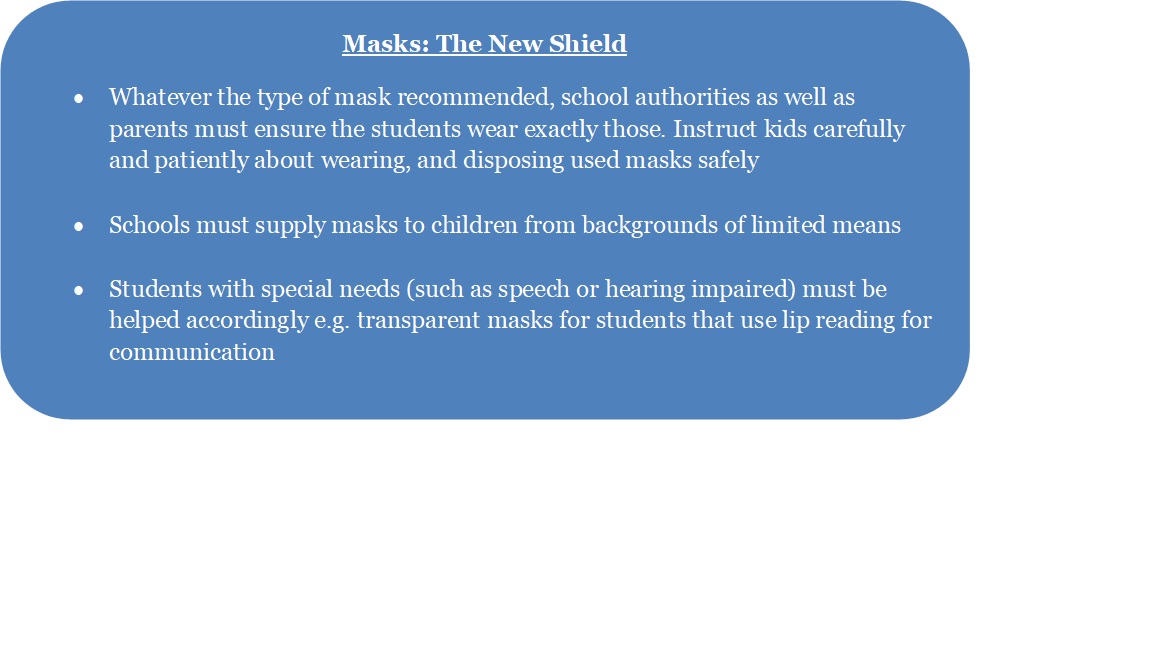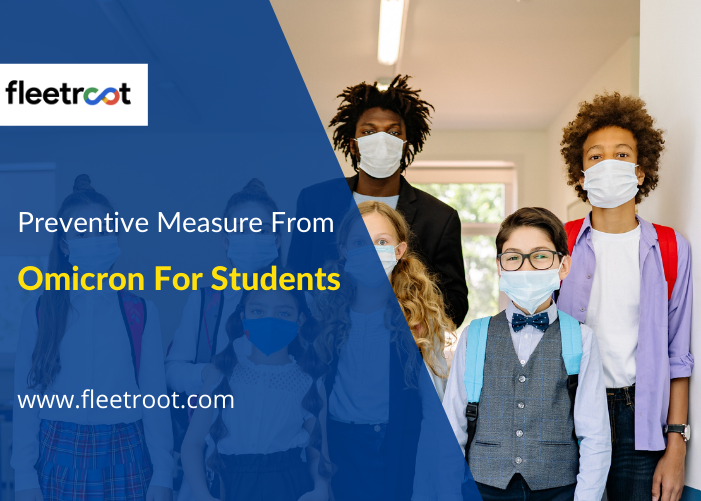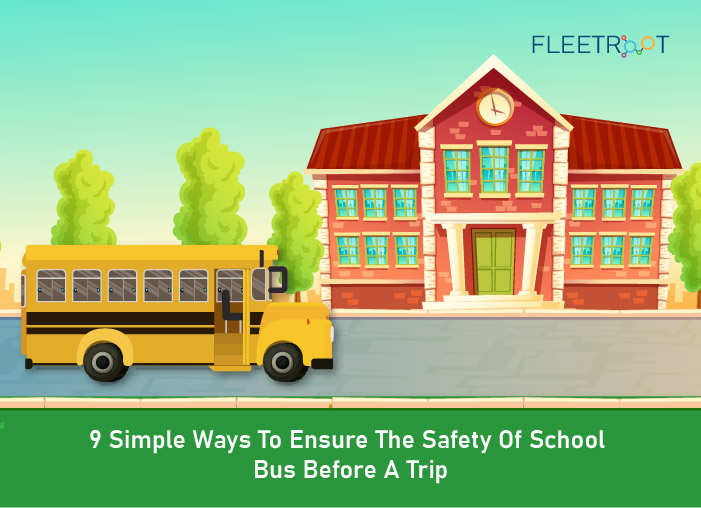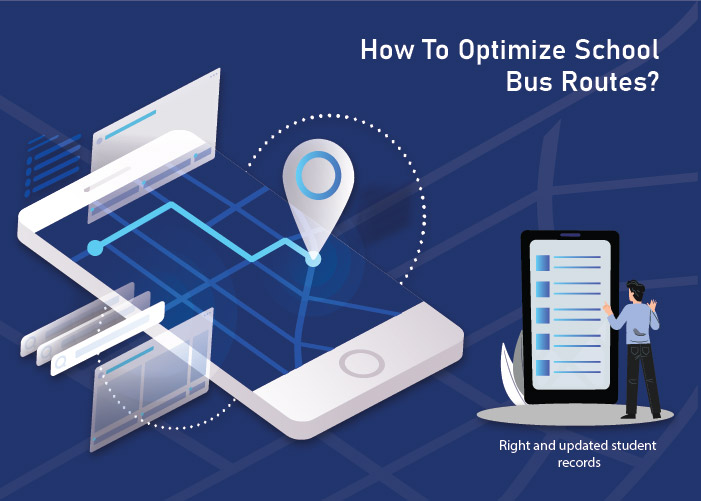Executive Summary
While the COVID-19 pandemic did start to wane through 2021, the arrival of the new “Omicron” strain in late 2021 has resulted in a sudden surge of cases the world over and the restrictions and safety measures are beginning to re-appear.
For students that had only just restarted school after nearly two years of online classes from home, it is very worrisome. Therefore, school authorities, staff members, and teachers must work in tandem with the Health Ministry officials as well as the kids’ parents at home to ensure the children stay safe during school hours while on school premises.
Taking preventive measures from Omicron for students
As schools start to re-open, all necessary precautions must be taken on school premises and in students’ lives to keep them safe.
School administrators, teachers, and staff play a key role in planning and executing these safety measures correctly while making sure that the time lost through almost all of 2020-21 does not affect the education and skills that the children imbibe.
Given below are some guidelines and best practices to follow:
1) Maintaining physical distance
Establish rules on school premises according to the guidelines of the Health Ministry. Common examples include:
- Maintain a distance of at least 1 metre
- Increase spaces between desks, stagger common times like lunch breaks (or, have lunch at own desks), possibly eliminate common activities like sports lessons and physical education (for now)
- Use varied start and end timings so that crowds are reduced and managed better
- Establish non-crowding rules during school pick-up and drop-off times and locations
- Put up markings, signs, barriers, barricades (etc.) to control crowd-flows, distances, queues (etc.)
- Use outdoor spaces for classes wherever possible
- Advise students not to socialize or mill around in groups during common activities e.g. while exiting or entering school premises
Establishing Best Practices:
- Creating a list of “dos and don’ts” along with students will be most beneficial. This experience is new for everyone, especially for children and they need to be instructed carefully and caringly
- Carefully think through physical movements for students, teachers and staff. Create a list of guidelines about daily greetings, desk arrangements, distancing rules, common-activity guidelines e.g. breaks, lunchtime rules

2) Hand hygiene and health
Hand washing is the most effective way of preventing the spread of the infection. It is cheap, easy, and can be done as often as required. Teach students to regularly wash their hands / apply hand sanitizers e.g. while entering/exiting classrooms when having touched surfaces e.g. staircase bannisters, laptops, books (etc.). If sufficient sinks and water aren’t available as required in the school, then using a hand sanitizer (must have 60% alcohol) must be mandatory. Schools must provide convenient hand washing/sanitizing stations at several locations (e.g. exits, entrances), near toilets, cafeterias (etc.).
Teach students to cough or sneeze into their arms. If by mistake, they do so into their hands (palms), then teach them to wash or sanitize hands immediately. Dispose of tissues that they sneeze/cough into. Teach students to avoid touching their nose, mouth, and eyes – since these three body parts are where the virus enters, there is always a risk.
Establishing Best Practices:
- Establish a daily ritual on hygiene. Go over it with the children for a few minutes every day
- Establish a “points system”, and award students points every time they wash/sanitize their hands. Announce weekly/monthly winners
- Have students make posters about Hand-and-Hygiene for hallways and classrooms
- Establish procedures for daily temperature screening a few times during the day
3) Sanitize, disinfect, clean
Everyday surfaces and items such as desks, doorknobs, staircase surfaces, elevator buttons and handles, phones, countertops, faucets, phones, computers, toys (etc.) that are touched during daily school activities must be cleaned at regular intervals during the day, regardless of whether they appear “soiled” or not.
Usage of gloves, proper disinfectant fluids, the now-famous “sanitizer”, as well as all other appropriate precautions for cleaning and disinfecting surfaces must be followed.
Establishing Best Practices:
- Designate “cleaning cycles” i.e. times during the day when cleaning is conducted. Schedule school activities and movements accordingly
- Establish rules for avoiding surfaces that are “high-risk” e.g. stairway railings
- Display these rules prominently on charts and bulletin boards. Create some fun activity around these rules for the kids e.g. impromptu classroom “tests” asking them how many sanitation rules they can recall. Reward them with something fun
- Use quality disinfectants, cleaning products, gloves, and eye protection while cleaning
- Parents must ensure school clothes are washed/disinfected appropriately everyday
- Ensure adequate ventilation and air-circulation within school premises. If the classrooms and halls are air-conditioned, consider not using/eliminating air-conditioners for the time being since air-circulation is extremely important – the virus hangs in the air for a while and with the Omicron virus transmitting itself faster than earlier variants, it is even more important to air out closed environments
4) Protocol to follow if a student or staff member feels sick
Identifying Omicron symptoms: The most commonly reported symptoms of the Omicron variant appear to be a runny nose, fatigue, headache, cold-like symptoms such as a sore throat and sneezing. As compared to earlier variants, Omicron symptoms appear to be “very mild”, or often asymptomatic.
Establishing Best Practices:
- Designate areas within school premises where the child (or, staff members, teachers etc.) can be isolated if they begin displaying symptoms during school hours. Make sure it is done with sensitivity – there should be no stigma attached to it, or done with a sense of disregard or vindication. The designated area should be well–ventilated, and preferably have 1-2 fulltime health care professionals (e.g. nurses)
- The symptomatic children should wait here in isolation till someone from their family fetches them. Thoroughly disinfect and sanitize the room thereafter
- Based on the situation, the children/staff could be sent directly to a hospital
- Make this procedure commonly known via charts and bulletin boards
Conclusion: The pandemic has resulted in a new paradigm of life – commonly referred to as the New Normal. However, children’s education is extremely important, and the sooner they can resume regular classes, the better it is for their education as well as their all-round development. Therefore, as they start returning to schools, adequate measures for classroom safety and for a safe commute must be maintained with utmost discipline.
School Bus GPS Tracking System Post Covid 19



